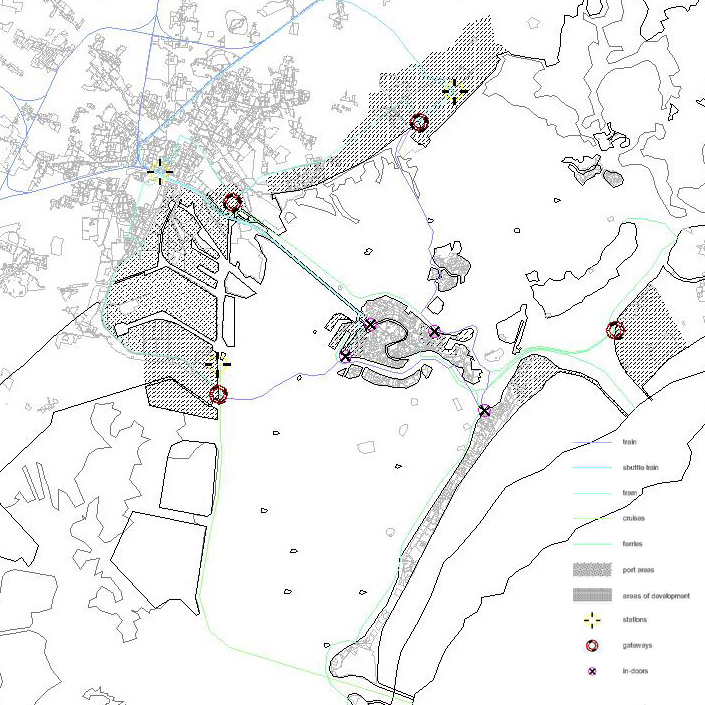
Venice Bound
The reuse of the boundaries to release pressure from the core
ILAUD workshop 2003
The plan constitutes a comprehensive and possible future scenario for the lagoon of Venice. The plan principles are driven by a new and different perception of the lagoon space and life in which the natural and physical environments have priority together with movement and livability.
The preservation of all biological, animal and human activities is connected to technical and scientific advances, in particular along the lagoon borders. Introducing or maintaining economical and social structures along them would protect Venice from a slow degradation in terms of life and livability.
Infrastructure is the main tool, but not the only one, for the realisation of this scenario. The plan foresees a rearrangement of the main access doors and paths to the city. The solution regulates and separate fluxes, promotes life for residents, commuters and workers, finally it improves communication, transportation and connection between Venice and the marginal, peripheral zones of the lagoon.
The scenario tries to answer every question related to the workshop’s topic about Venice and its modernity. It is really from the interlacing of the answers that springs out our proposal.
Venice has never been modern in the meaning that Berman gives (All that is solid melts into air: the experience of modernity, 1982), even having lived a small and short industrial revolution, nor it is actually post-modern in the meaning of Harvey (The condition of postmodernity: an enquiry into the origins of cultural change, 1988).
Venice is only contemporary, because it belongs to the actual age more than anything else: at any given time in history it has always belonged indissolubly to its current age and not to one specific, finding in every time its role, its configuration, its space and reason of being. If we want to introduce the term “modern” for Venice, we must first give the word a specific meaning that is different from the one commonly used from the end of the XVII century to today, otherwise it is better to use “modern” with the meaning of “present” and “actual” or “current”.
Venice will never be able to homologate itself to a certain kind of modernity lived by or proposed for other cities. If we want to talk about modernity, it cannot be exclusively in terms of implementing great engineering works.
Venice, the lagoon, the life that takes place in them, the urban and metropolitan organization, the relation with water and nature and the concept of time bound to distances are phenomena different from those of any other contemporary city. It is the evidence that people can live in another way, that life exists without car. It is a reality where the slow pace of walking and sailing determine the rhythm of every other activity.
Venice is an artificial city, bound to a constant ordinary and extraordinary maintenance, immersed in a natural lagoon landscape which has been preserved by man with impressive hydraulic works. This delicate mixture produces beauty and a difficult-but-high-quality life: these are the specific and peculiar characteristics of Venice that make it so special and unclassifiable. These qualities should make everyone reflect on the significance of modern, postmodern and contemporary life anywhere else.
Publication